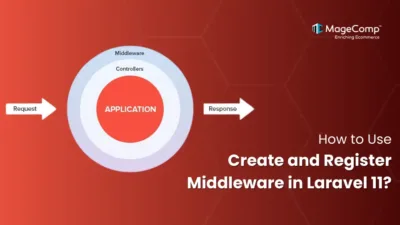Laravel is a strong PHP framework capable of managing multiple database connections in a single application. It comes in useful while working with microservices, separation of read/write operations, or different types of databases. Here in this blog, we are going to find out how to configure and work with multiple databases in Laravel 11.

Steps to Use Multiple Database in Laravel 11:
Step 1: Create .env file in your Laravel project directory
DB_CONNECTION=mysql
DB_HOST=127.0.0.1
DB_PORT=3306
DB_DATABASE=blogs
DB_USERNAME=root
DB_PASSWORD=user123
DB_CONNECTION_TWO=mysql
DB_HOST_TWO=127.0.0.1
DB_PORT_TWO=3306
DB_DATABASE_TWO=blogs2
DB_USERNAME_TWO=root
DB_PASSWORD_TWO=user123Step 2: Now we need to use that variable in the config file. Open the config/database.php file, and insert the following code
<?php
use Illuminate\Support\Str;
return [
'default' => env('DB_CONNECTION', 'sqlite'),
'connections' => [...],
'mysql' => [
'driver' => 'mysql',
'url' => env('DB_URL'),
'host' => env('DB_HOST', '127.0.0.1'),
'port' => env('DB_PORT', '3306'),
'database' => env('DB_DATABASE', 'laravel'),
'username' => env('DB_USERNAME', 'root'),
'password' => env('DB_PASSWORD', ''),
'unix_socket' => env('DB_SOCKET', ''),
'charset' => env('DB_CHARSET', 'utf8mb4'),
'collation' => env('DB_COLLATION', 'utf8mb4_unicode_ci'),
'prefix' => '',
'prefix_indexes' => true,
'strict' => true,
'engine' => null,
'options' => extension_loaded('pdo_mysql') ? array_filter([
PDO::MYSQL_ATTR_SSL_CA => env('MYSQL_ATTR_SSL_CA'),
]) : [],
],
'mysql_second' => [
'driver' => 'mysql',
'url' => env('DB_URL_TWO'),
'host' => env('DB_HOST_TWO', '127.0.0.1'),
'port' => env('DB_PORT_TWO', '3306'),
'database' => env('DB_DATABASE_TWO', 'laravel'),
'username' => env('DB_USERNAME_TWO', 'root'),
'password' => env('DB_PASSWORD_TWO', ''),
'unix_socket' => env('DB_SOCKET_TWO', ''),
'charset' => env('DB_CHARSET', 'utf8mb4'),
'collation' => env('DB_COLLATION', 'utf8mb4_unicode_ci'),
'prefix' => '',
'prefix_indexes' => true,
'strict' => true,
'engine' => null,
'options' => extension_loaded('pdo_mysql') ? array_filter([
PDO::MYSQL_ATTR_SSL_CA => env('MYSQL_ATTR_SSL_CA'),
]) : [],
],
.....Step 3: Create a separate migration for multiple database connections
First –
<?php
.....
public function up(): void
{
Schema::create('blogs', function (Blueprint $table) {
$table->increments('id');
$table->string('title');
$table->string('body')->nullable();
$table->timestamps();
});
}
.....Second –
<?php
.....
public function up(): void
{
Schema::connection('mysql_second')->create('blogs', function (Blueprint $table) {
$table->increments('id');
$table->string('title');
$table->string('body')->nullable();
$table->timestamps();
});
}
.....Step 4: Create Modal for both
First –
<?php
namespace App\Models;
use Illuminate\Database\Eloquent\Model;
class Blog extends Model
{
protected $fillable = [
'title', 'body'
];
}Second –
<?php
namespace App\Models;
use Illuminate\Database\Eloquent\Model;
protected $connection = 'mysql_second';
class Blog extends Model
{
protected $fillable = [
'title', 'body'
];
}Step 5: Controllers for Multiple Database Connections
First –
<?php
use App\Models\Blog;
class BlogController extends Controller
{
public function getData()
{
$blogs = Blog::get();
return $blogs;
}
}Second –
<?php
use App\Models\Blog;
class BlogSecondController extends Controller
{
public function getRecord()
{
$blog = new Blog;
$blog->setConnection('mysql_second');
$data = $blog->find(1);
return $data;
}
}Step 6: In the Route file
Insert the following code in your web.php file
<?php
use App\Http\Controllers\FrontendController;
use Illuminate\Support\Facades\Route;
Route::get('/get-mysql-blogs', [BlogController::class, 'getData'])->name('mysql-blog');
Route::get('/get-mysql-second-blogs', [BlogSecondController::class, 'getRecord'])->name('mysql-second-blog');Conclusion
It is easy to use multiple databases in Laravel 11 with its native database management system. This method is perfect for managing large-scale applications that need various data sources.

If you face any difficulty, let me know through the comment section.





